Abstract
Mathews, Micheline M. (Department of Bacteriology, University of California, Berkeley). Comparative study of lethal photosensitization of Sarcina lutea by 8-methoxypsoralen and by toluidine blue. J. Bacteriol. 85:322–328. 1963.—A comparative study has been made of the photo-killing of Sarcina lutea by 8-methoxypsoralen (8-MOP) and by toluidine blue. It has been found that photosensitization by 8-MOP differs from photosensitization by toluidine blue, in that it has a temperature coefficient of less than one, and that the presence of oxygen is not necessary for, and even is deleterious to, the photosensitization, the psoralen being destroyed by its presence. It has previously been shown that the presence of carotenoid pigments protects the cells of S. lutea from lethal photosensitization by toluidine blue; it was found that the presence of these pigments has no protective effect in photosensitization with 8-MOP. Studies on the lethal photosensitization of S. lutea with toluidine blue suggested that the primary sensitive site of the photokilling was the protein of the cell membrane, as manifested by the destruction of membrane enzyme activity and the regulation of permeability. It has been found that photokilling by 8-MOP has no effect on these functions. A study was made on the effect of photokilling by 8-MOP on the production of penicillin-resistant mutants as an indication of an alteration in the cellular deoxyribonucleic acid (DNA) by the psoralen. Psoralen photosensitization resulted in the development of many penicillin-resistant mutants. On the basis of the findings reported in this paper, it is suggested that photosensitization of S. lutea by 8-MOP does not reflect damage to cellular protein, as does toluidine blue, but rather damage to cellular DNA.
Full text
PDF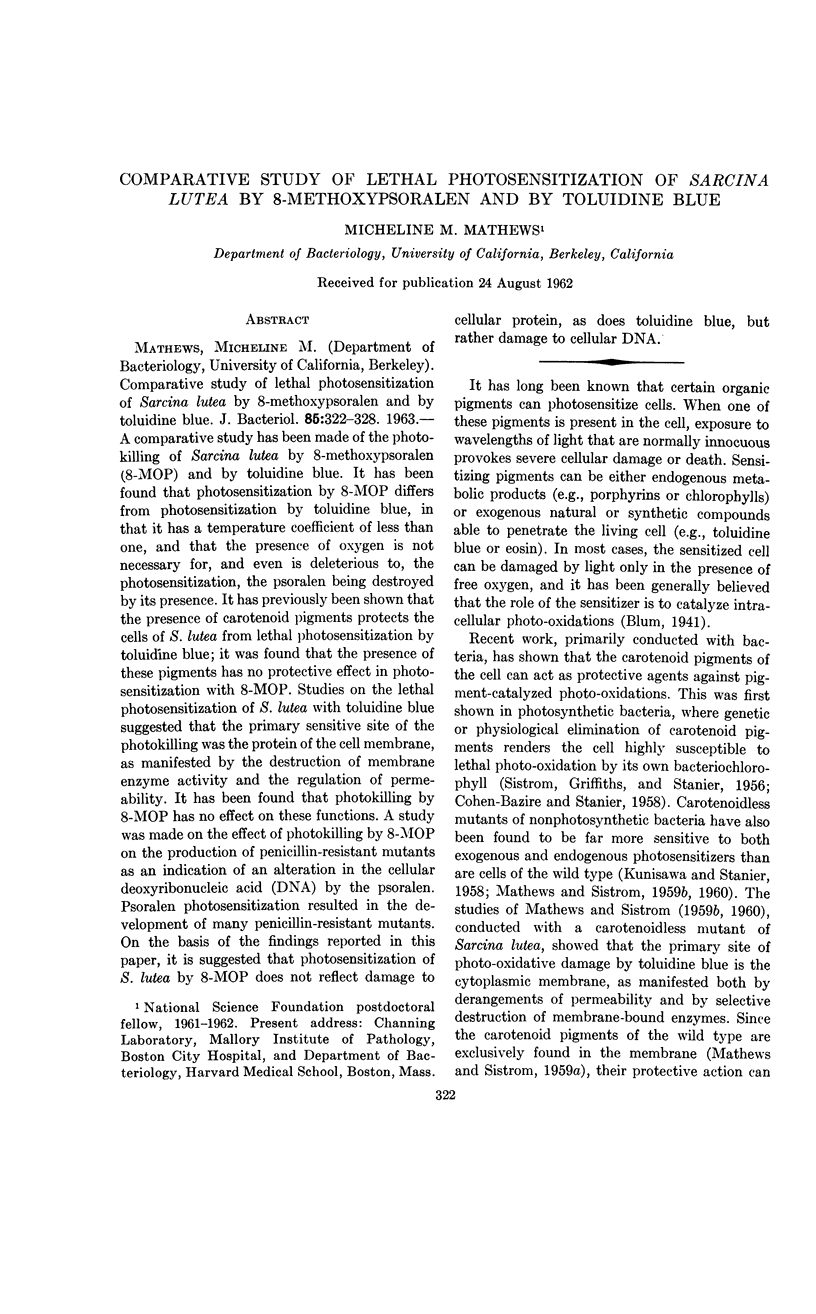
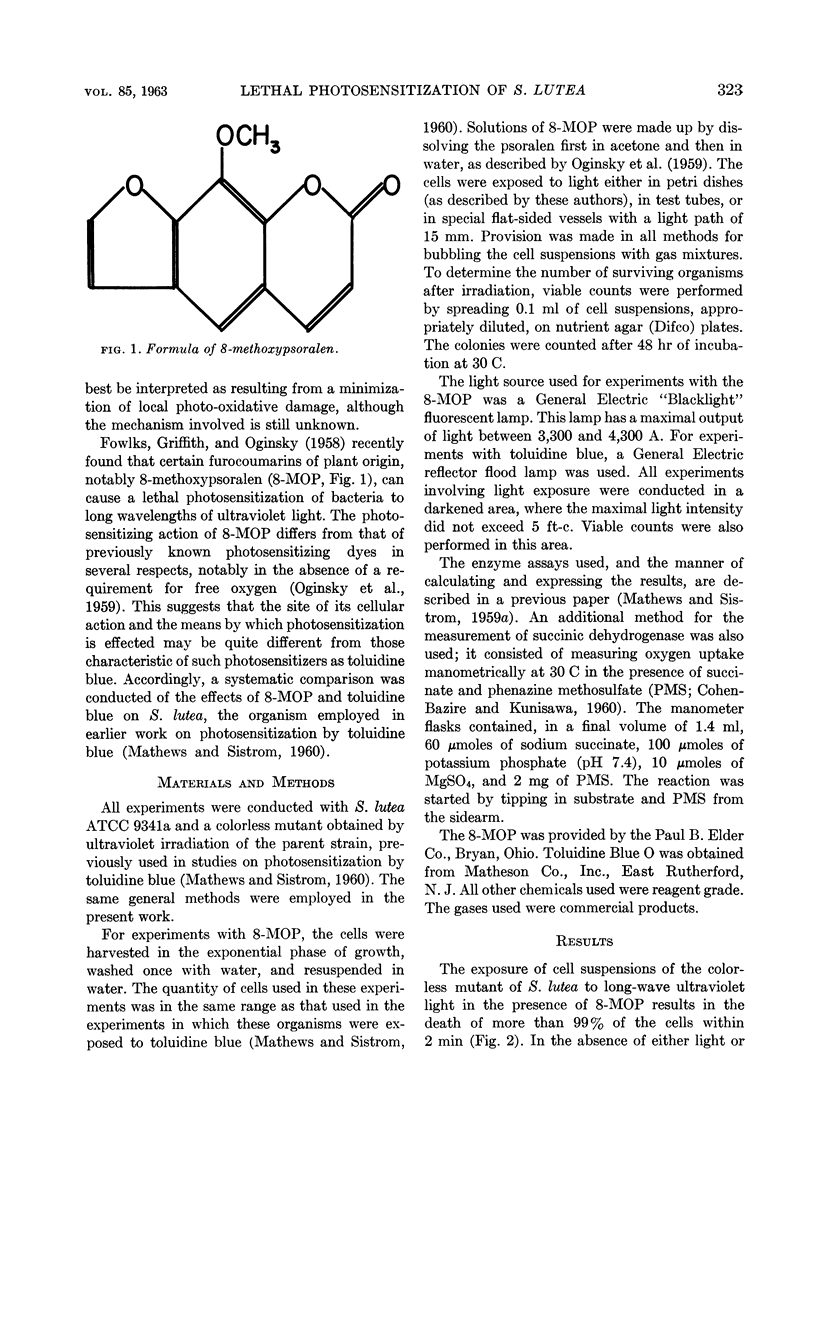
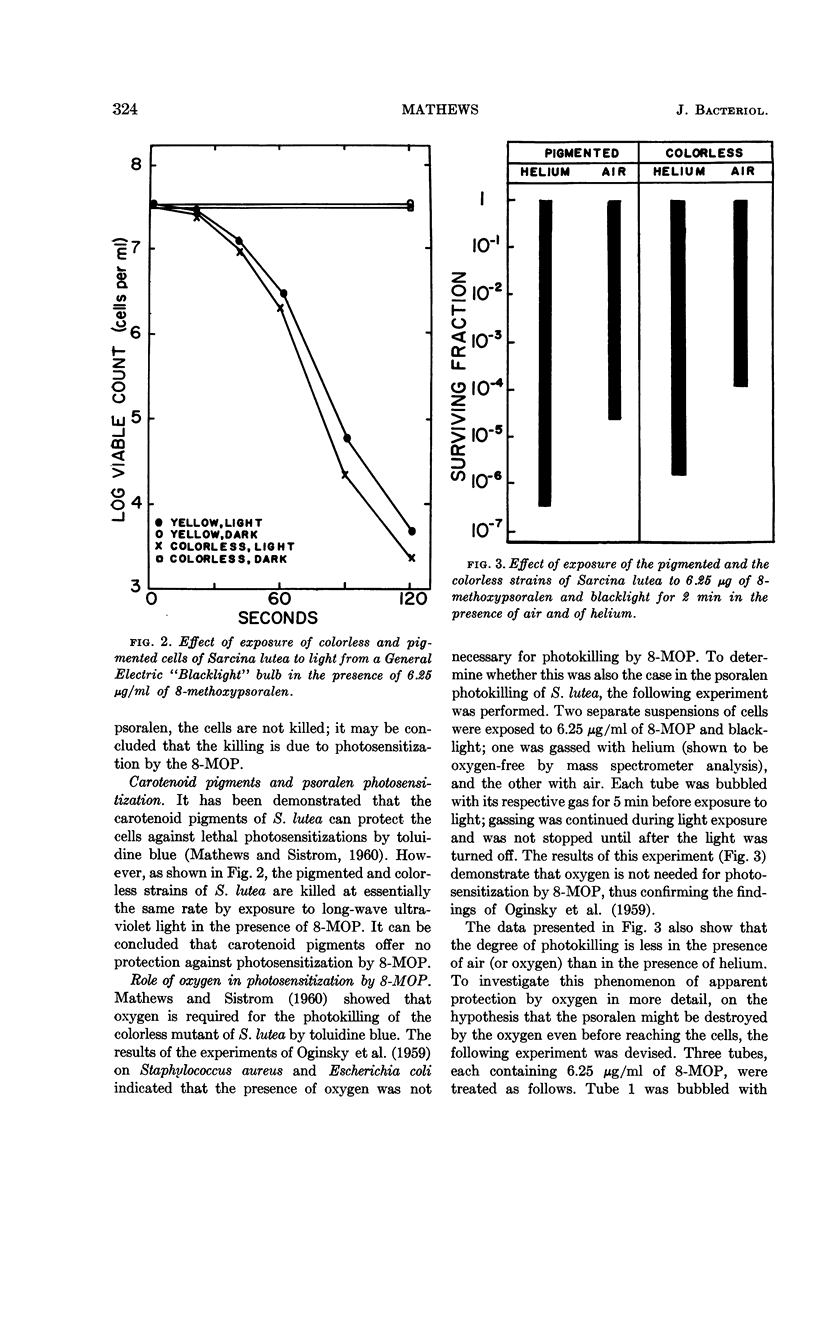
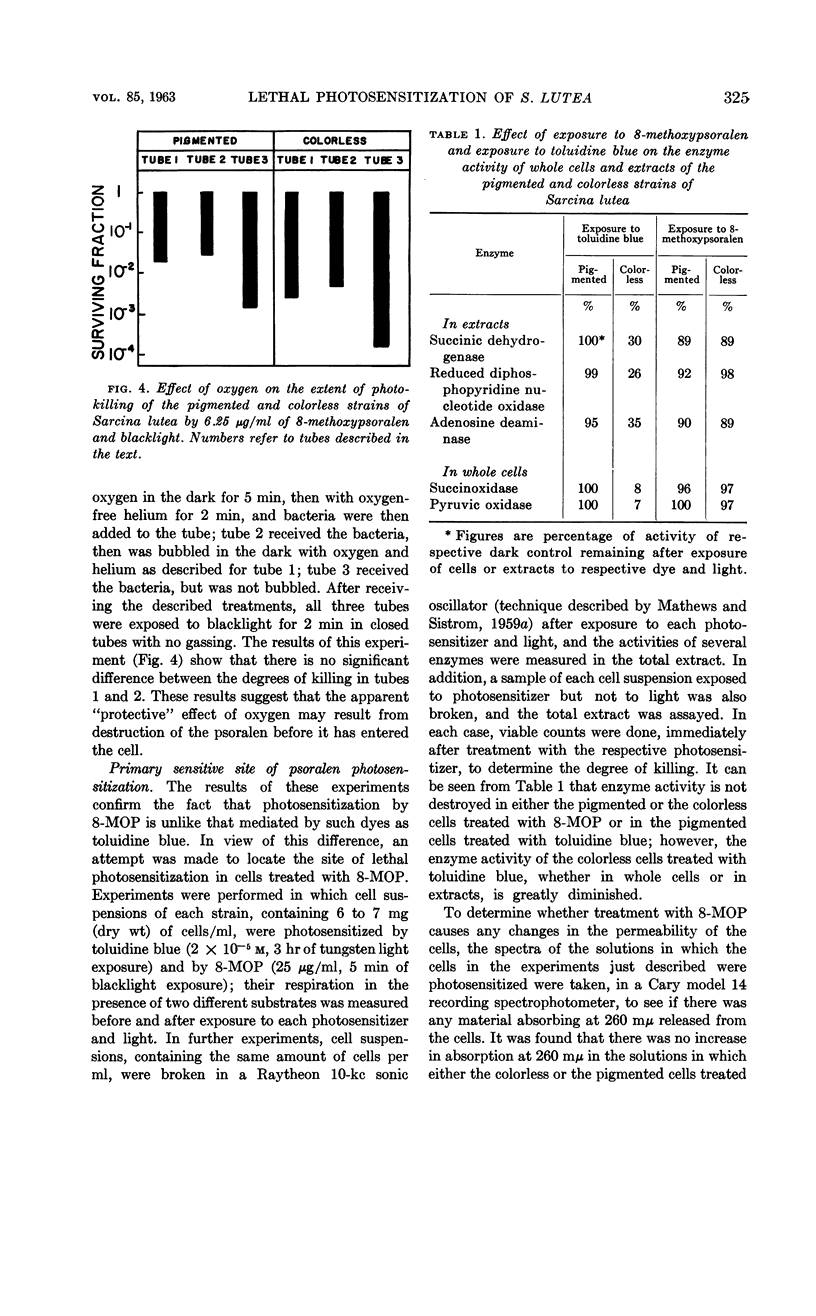
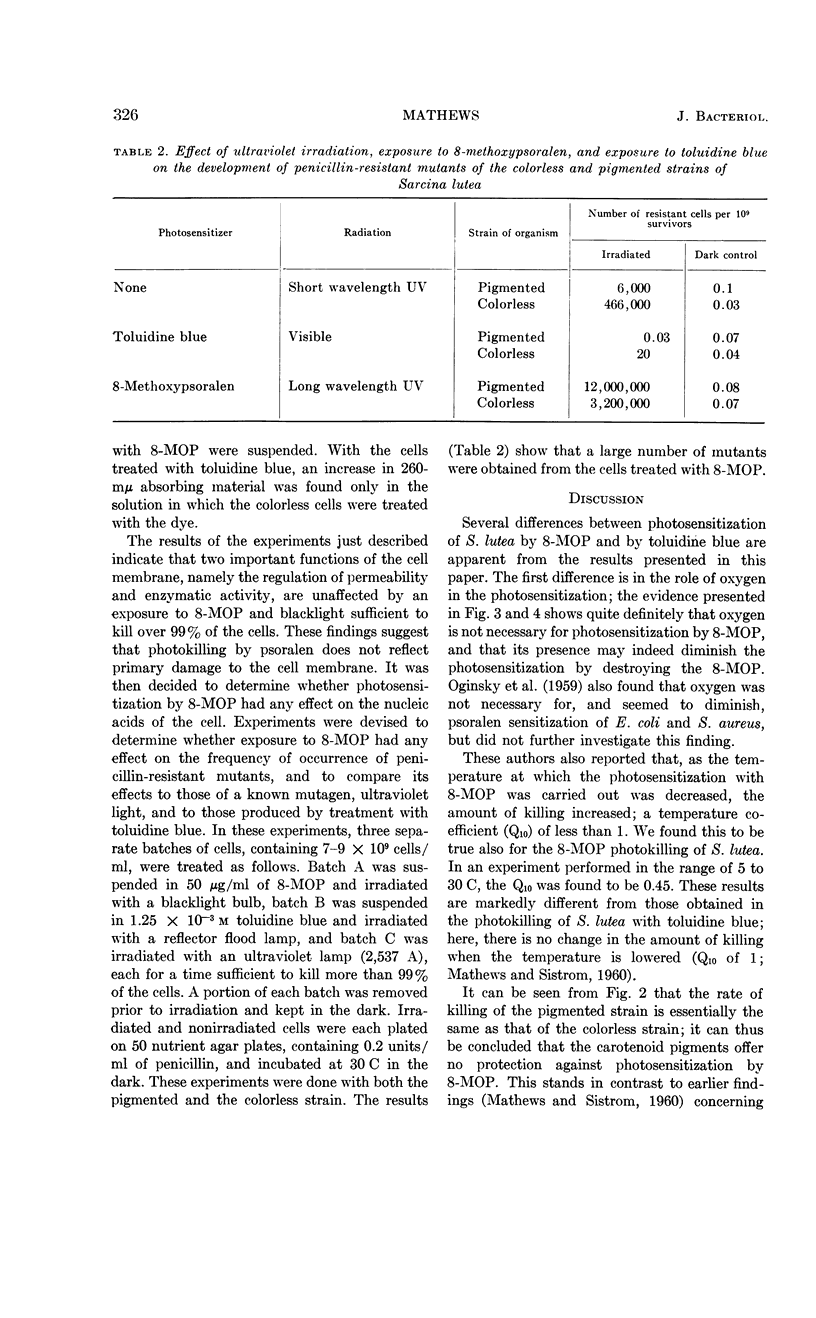
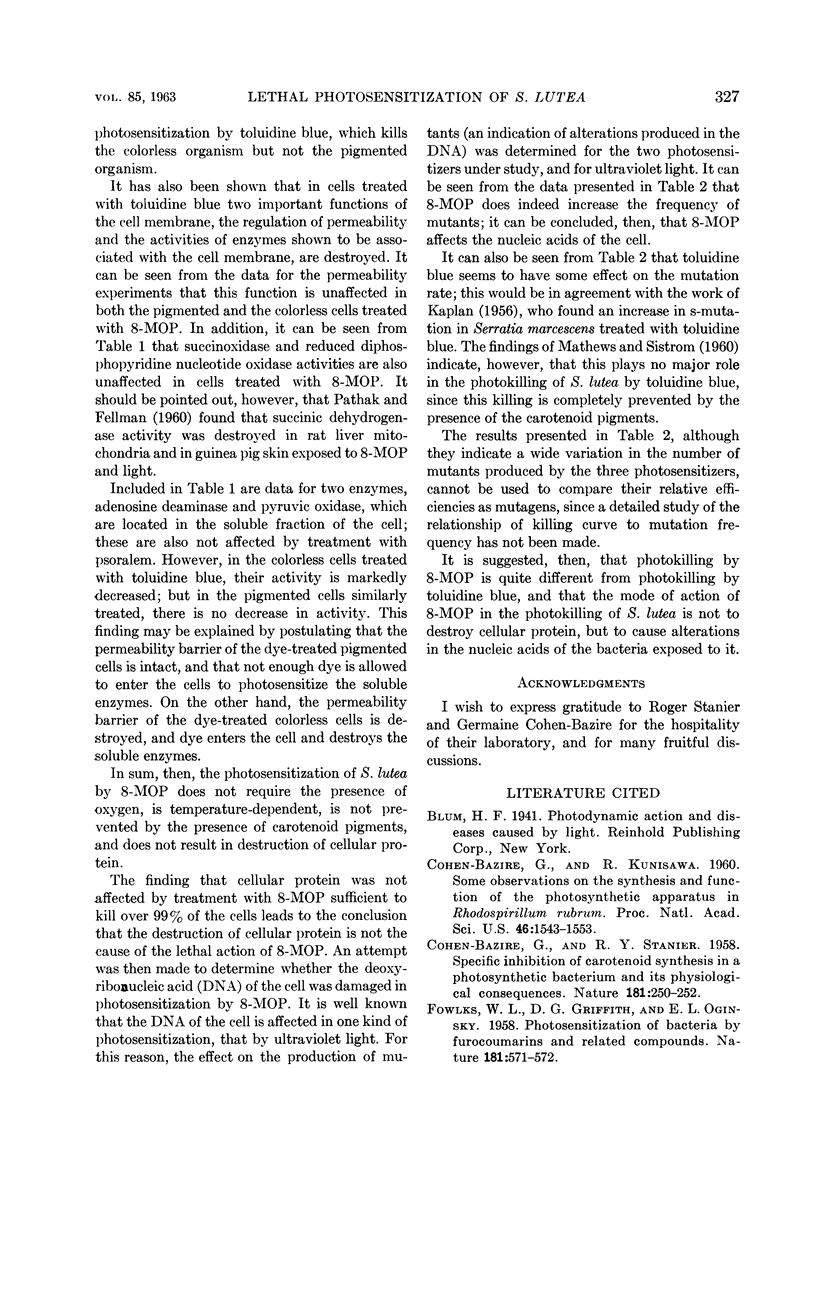
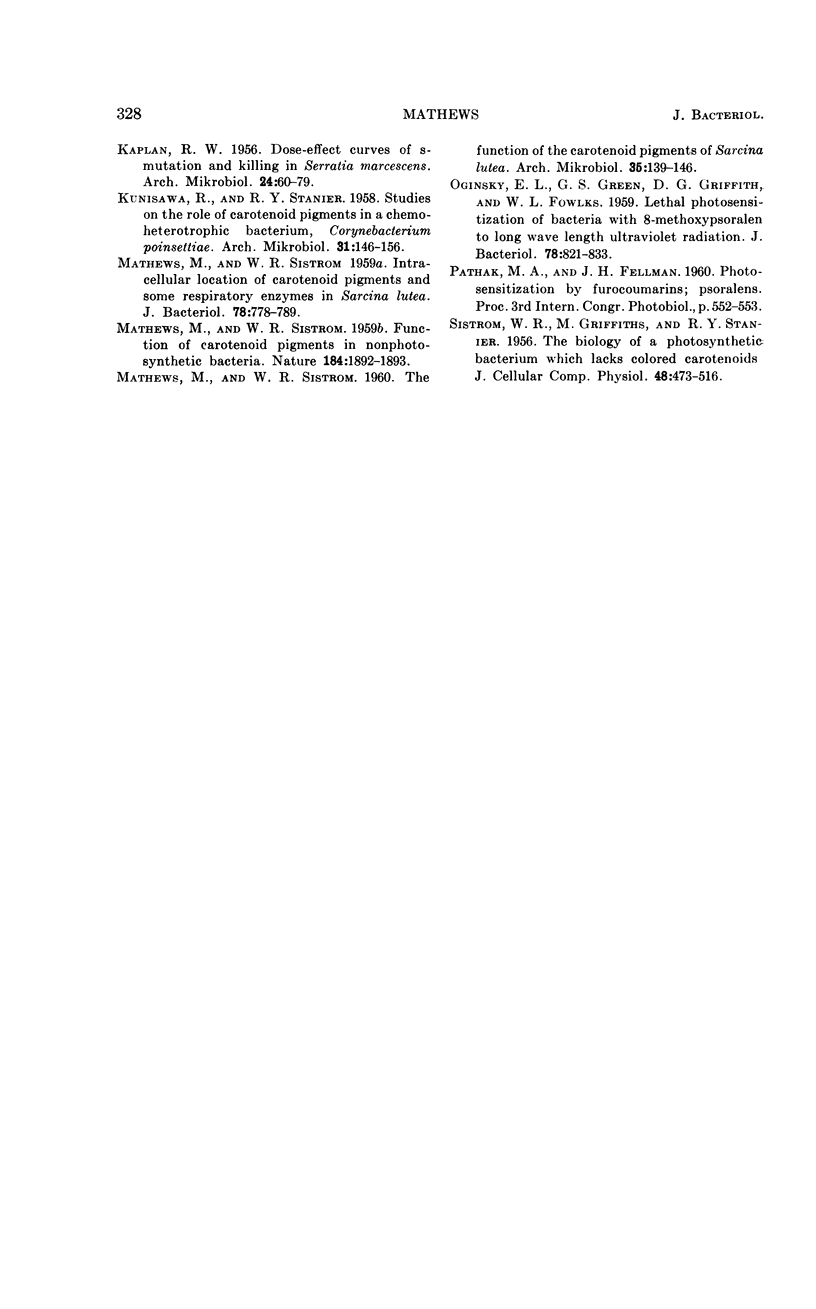
Selected References
These references are in PubMed. This may not be the complete list of references from this article.
- COHEN-BAZIRE G., STANIER R. Y. Specific inhibition of carotenoid synthesis in a photosynthetic bacterium and its physiological consequences. Nature. 1958 Jan 24;181(4604):250–252. doi: 10.1038/181250a0. [DOI] [PubMed] [Google Scholar]
- Cohen-Bazire G., Kunisawa R. SOME OBSERVATIONS ON THE SYNTHESIS AND FUNCTION OF THE PHOTOSYNTHETIC APPARATUS IN RHODOSPIRILLUM RUBRUM. Proc Natl Acad Sci U S A. 1960 Dec;46(12):1543–1553. doi: 10.1073/pnas.46.12.1543. [DOI] [PMC free article] [PubMed] [Google Scholar]
- FOWLKS W. L., GRIFFITH D. G., OGINSKY E. L. Photosensitization of bacteria by furocoumarins and related compounds. Nature. 1958 Feb 22;181(4608):571–572. doi: 10.1038/181571a0. [DOI] [PubMed] [Google Scholar]
- KAPLAN R. W. Dose-effect curves of s-mutation and killing in Serratia marcescens. Arch Mikrobiol. 1956;24(1):60–79. doi: 10.1007/BF00418422. [DOI] [PubMed] [Google Scholar]
- MATHEWS M. M., SISTROM W. R. Function of carotenoid pigments in non-photosynthetic bacteria. Nature. 1959 Dec 12;184(Suppl 24):1892–1893. doi: 10.1038/1841892a0. [DOI] [PubMed] [Google Scholar]
- MATHEWS M. M., SISTROM W. R. Intracellular location of carotenoid pigments and some respiratory enzymes in Sarcina lutea. J Bacteriol. 1959 Dec;78:778–787. doi: 10.1128/jb.78.6.778-787.1959. [DOI] [PMC free article] [PubMed] [Google Scholar]
- MATHEWS M. M., SISTROM W. R. The function of the carotenoid pigments of Sarcina lutea. Arch Mikrobiol. 1960;35:139–146. doi: 10.1007/BF00425002. [DOI] [PubMed] [Google Scholar]
- OGINSKY E. L., GREEN G. S., GRIFFITH D. G., FOWLKS W. L. Lethal photosensitization of bacteria with 8-methoxypsoralen to long wave length ultraviolet radiation. J Bacteriol. 1959 Dec;78:821–833. doi: 10.1128/jb.78.6.821-833.1959. [DOI] [PMC free article] [PubMed] [Google Scholar]


